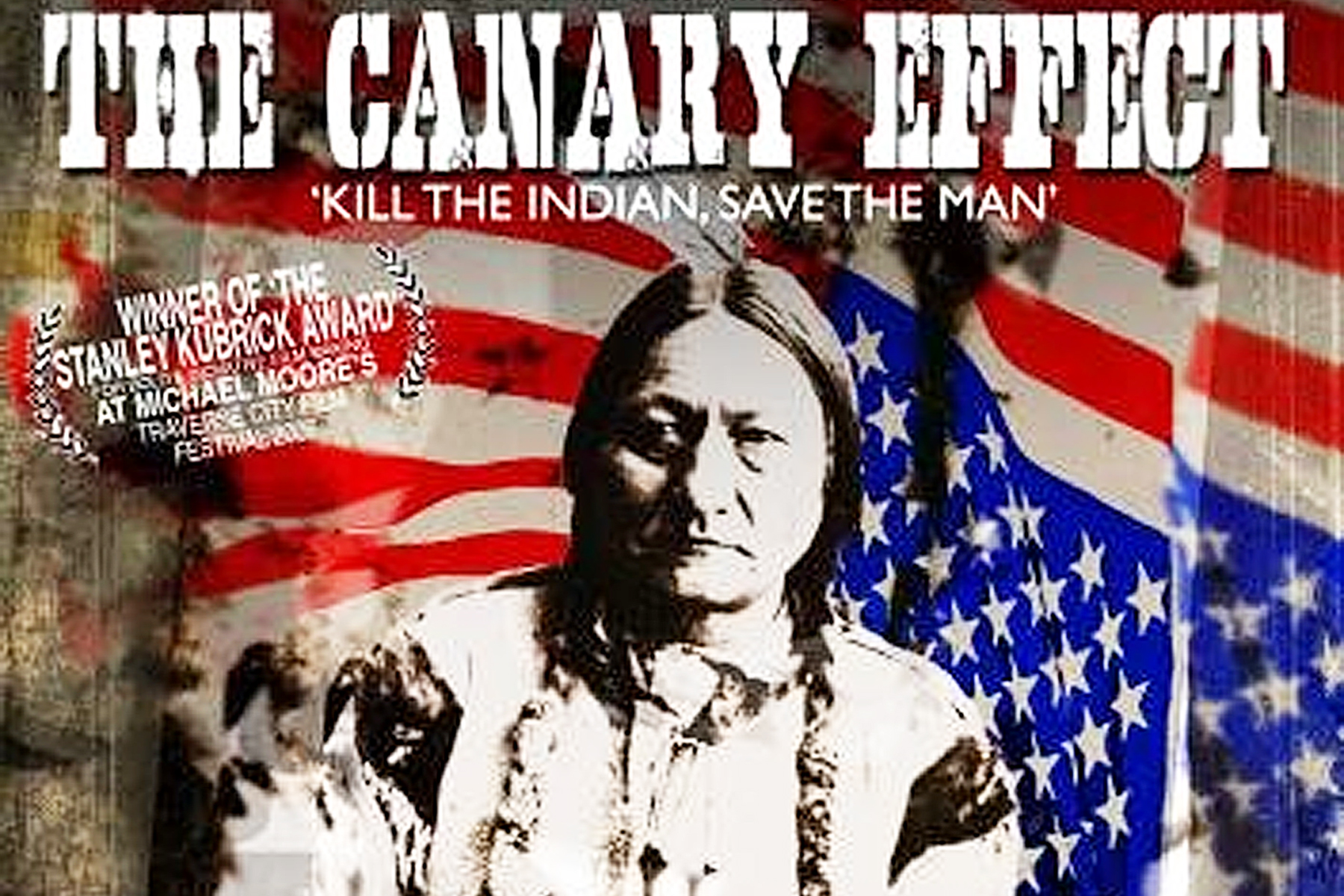The Holocaust and Genocide Studies Project at the Portland Center for Public Humanities will host a series of three films exploring the questions of genocide in North American history at the Native American Student and Community Center.
The three films delve into the historical and current effects of governmental policies on Indigenous peoples in the U.S. and Canada.
“In my experience in U.S. classrooms, topics like genocide or mass murder are thought of as happening to other people, somewhere else,” said Dr. Patricia Schechter, professor of history and chair for the Holocaust and Genocide
Studies Project. “It happens in places like Cambodia or Rwanda. It’s important to explore this topic within North American history.”
The first film in the series, The Canary Effect, examines the way main-stream media portrays Native American issues and explores the white-washing of Native American history in public schools.
The film provides an in-depth study on the history of governmental policies affecting Indigenous peoples throughout U.S. history. The effects of mass extinction policies, from outright massacre and eugenics to the less violent policies of containment and cultural assimilation, are explained in a historical context.
The second film, The Thick Dark Fog, is a documentary about Walter Littlemoon’s efforts to reconcile with his experiences in an Indian boarding school in 1950.
According to the film, in the late 1800s the U.S. government implemented an Americanization policy designed
to assimilate Native American children into European American culture. Young children were commonly removed from their families and sent to federally funded Indian boarding schools, where they were forbidden to speak their native languages, wear tribal dress or practice their religions.
The film features interviews with individuals who attended Indian boarding schools in the ‘50s and ‘60s, and they discuss the ways shame and unresolved trauma experienced in the schools continue to impact their lives and the lives of their families.
“At PSU, students regularly raise the question of coercive assimilation as committing violence against a group. They often use the phrase ‘cultural genocide,’” Schechter said. “These films help us to think through various kinds and types of violence in the colonization of the Americas and also to consider resistance and adaptation as well.”
The film explains that changes in government policy, including the right to self-govern and maintain their traditions, mean Native American cultures are no longer vilified in the U.S.
Over the last 20 years, mainstream opinion of Native American cultures have dramatically shifted, and many native traditions are romanticized. This mystification of Native American traditions currently has a negative effect on Indigenous people.
Schechter explains that this is “because they are still being stereotyped. They aren’t being recognized as cultures with complexities and diversity.”
The last film in the series, No Turning Back, puts a spotlight on the diversity and complexity of the Indigenous peoples of Canada from several different angles. Native filmmakers collected over 300 hours of interviews from a wide range of Native tribes and cultures on topics like past and present government policies, self-government and the criminal justice system from the perspective of First Nation peoples in Canada.
The film series is accompanied by literature that explores these issues in-depth.
“The books and literature were chosen to resonate with our target audience—mainly PSU students who are interested in learning about issues of culture and race in our past, present and future,” said Tavi Gupta, a junior and student director of the Holocaust and Genocide Studies Project.
Each film will be followed by a discussion session over pizza, so students can ask questions and process any new or startling information they may learn from the films.
“These films help enrich our vocabularies beyond victimization and beyond binaries like ‘traditional’ or ‘assimilated,’” Schechter said. “A key goal is to help students think more critically and creatively about power in Native American history. This involves broadening our grasp of the sources, the stories, the speakers and their many resonances across time and culture.”
Gupta is currently setting up an online forum for the film series where students can comment or post questions about what they learned in the films.
“It’s a place where students can post reflections on the films, ask questions and extend the conversation. We hope to use it to encourage discussion and maintain continuity of the conversation between films,” Schechter said.
More information about the film series can be found at thehgsproject.wordpress.com. The films will be shown Feb. 27, March 6 and March 13 from 6–8:30 p.m in the NASCC, room 170. The series is free and open to the public.






